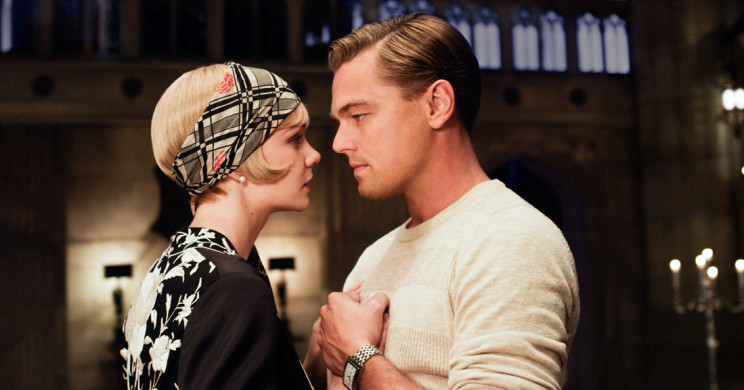By Tony Zaza
Neither an interpretation nor a translation of a literary work, but rather the basis for a deconstruction, The Great Gatsby rolls along feverishly like a bad memory.
And so to entice you to pay attention to the pivotal point of F. Scott Fitzgerald’s The Great Gatsby, director Baz Luhrmann sugar coats numerous scenes with eye candy, and adorns quick-cut party scenes with stylistically anachronistic glitz rap. These decisions are meant to “Luhr” you toward the quiet tearful Zen moment when Daisy, played by the delicately feminine but vacant Carey Mulligan, effectively destroys the myth of American romantic love. In stating tearfully that she did once love her husband even though she now does sort of love Gatsby, Daisy effects a curious feminist duality and new kind of female identity. This confession, of course, converts Leonardo De Caprio into the Great Catsby, scratching and clawing at his own tragic psychic impotence.
When the camera zooms back upward like a roller coaster, you can’t really see anything in the vast party mise en scene, it’s just more icing and structurally in conflict with the purpose of 3D. There is nothing Luhrman has achieved with the 3D mode that he hadn’t already established with his elegant deep focus compositions. If anything, 3D diffuses the intimacy of some scenes and changes the emotional focus of others. His bold cityscape strokes miss the nuances of New York in the 1920s. It’s a tableau for foreign tourists who would come away with a feeling of the old NY city that’s more like a Terry Gilliam Brazil than a Scorsese Five Corners. And one wonders about the scale of the Gatsby ego reflected in the dreamscape of his monstrously excessive habitat, a configuration that conflicts with De Caprio’s well studied pseudo Germanic look and sense of acquired nobility. Perhaps everything has to be served with hot sauce to satisfy the jaded palettes of American audiences.
In stark contract, Therese Desqueyroux takes a more subtle, but daring route in expressing the milieu of male dominance women endured in France during the same “Gatsby” era. Claude Miller, however, allows the bleeding soul of his anti-heroine, played by Audrey Tatou, to poison both the mood as well as her husband. Her liberation rings true where Daisy has no avocation to be independent. Miller is no more faithful to Francois Mauriac than Luhrmann was to Fitzgerald, but his transgressions are brave not opportunistic, delicate not bombastic. It is the basic difference between old and new world cinema; one says too little, one says too much.
Therese senses selfhood as a child and by the time she consents to a scheduled marriage to an affluent landowner, she is repulsed by her lack of choices. Daisy on the other hand has too many options, all bad, so she establishes herself as the typical “flapper” era “object”. Where Daisy seeks consolation and balance, Therese strives for escape but within the confines of an accepted French social order. While Miller does not embellish, Luhrmann can’t help but do so.
We are invited to Daisy’s party and to Thereses’ torment. When Therese finds herself in solitary confinement estranged from her husband and child, she’s tortured by conflicts of sentiment, decrying and lamenting the romantic successes and failures of her sister-in-law. Daisy just wants to be fair. In Miller’s tale, men are boorish monsters. In Luhrmann’s fantasy, men are flowered but almost heroic role models of a sort like guys who get lucky at a singles bar. Both women are discarded trophies, yet it is hard to say if they are worse off than any woman today.
























